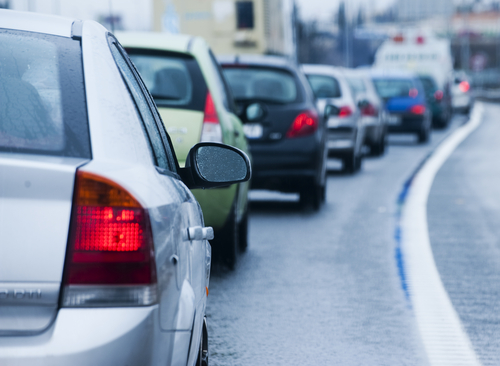
If a new experiment by the U.S. Department of Transportation and the University of Michigan pans out, talking cars won’t be limited to cheesy sci-fi movies and cartoons. That’s because those two organizations are installing a fleet of roughly 3,000 vehicles with DSRC (Dedicated Short Range Communications) devices, allowing the latter to communicate wirelessly about speed and location. Whenever cars seem to be on a collision course, an onboard indicator will alert the driver to take some sort of evasive action. The devices have a 300-meter range and collect data multiple times per second. Whether “talking” cars become a mass-market reality, though, depends on whether the study data shows a decrease in accidents thanks to the wireless devices. The $25 million experiment, which involves vehicles and technical support from eight automobile companies, will take place on the streets of Ann Arbor, Michigan over the course of the next year. “This is a big deal and I think everybody here believes this has a lot of promise,” Transportation Secretary Ray LaHood said during the Michigan event, according to
Reuters. “But until we see the data, until the study is complete, we won’t know with certainty what promise it really has. A year from now I think we will.” In theory at least, the federal government could eventually mandate that automobiles come installed with sensors that talk to surrounding cars and infrastructure. Automobile companies already utilize sensors to improve their vehicles’ technology: millions of tiny monitors embedded in millions of components equals a tide of information that Ford and others can use to make their products safer and more efficient.
Ford recently opened a laboratory in Silicon Valley with the aim of, in the company’s words, exploring “big data, open-source innovation and user experience.” In addition to improving individual vehicles, Ford believes that aggregated data from sensors can also help solve macro-level issues such as traffic congestion. Yet all the sensors, data analysis, and wireless technology in the world can’t sidestep one key factor in roadway safety: the (very human) driver. While sensors embedded in the car can detect a collision and sound an alarm or vibrate the steering wheel, it’s up to the
homo sapien in the driver’s seat to actually react fast enough to avoid an accident. But don’t worry—
Google is already working on the driver part.
Image: Luna Vandoorne/Shutterstock.com

